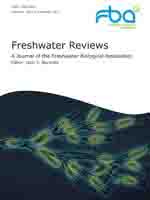Stratospheric ozone concentrations are not expected to recover to pre-ozone hole levels until the mid-21st century and, even after ozone recovery, climate and other anthropogenic changes will continue to alter ultraviolet radiation (UV) exposure regimes in aquatic ecosystems. Although our understanding of the ecology of UV continues to move towards a new paradigm that emphasises complex interactive and indirect effects of UV on communities of organisms, rather than simple direct negative effects on individuals, considerable uncertainty remains regarding the impacts of sustained or changing UV stress on aquatic ecosystems. In this synthesis we examine the importance of indirect UV effects for some key ecosystem level characteristics and processes in lakes. We draw particular attention to the implications of UV for disease dynamics, contaminant toxicity, biodiversity, and carbon cycling in lakes. Although UV has strong lethal mutagenic and chronic physiological effects on organisms, we suggest that indirect effect pathways, including UV effects on animal behaviour, food quality, and trophic interactions are likely to be important in lake ecosystem dynamics.
How to translate text using browser tools
1 December 2011
Lakes in a New Light: Indirect Effects of Ultraviolet Radiation
Andrew J. Tucker,
Craig E. Williamson
ACCESS THE FULL ARTICLE
It is not available for individual sale.
This article is only available to subscribers.
It is not available for individual sale.
It is not available for individual sale.

Freshwater Reviews
Vol. 4 • No. 2
December 2011
Vol. 4 • No. 2
December 2011
carbon cycling
contaminant toxicity
disease dynamics
indirect effects
lakes
ultraviolet radiation




